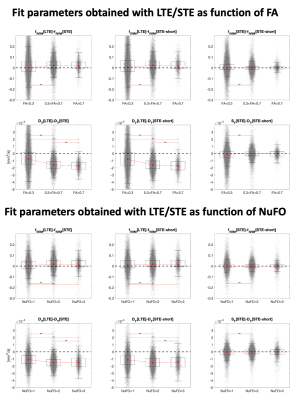Alberto De Luca1,2, Geert-Jan Biessels1, Ofer Pasternak3, and Chantal MW Tax4,5
1Department of Neurology, University Medical Center Utrecht, Utrecht, Netherlands, 2PROVIDI Lab, Image Sciences Institute, University Medical Center Utrecht, Utrecht, Netherlands, 3Brigham and Women's Hospital, Harvard Medical School, Boston, MA, United States, 4Cardiff University Brain Research, Imaging Centre (CUBRIC), University of Cardiff, Cardiff, United Kingdom, 5Image Sciences Institute, University Medical Center Utrecht, Utrecht, Netherlands
1Department of Neurology, University Medical Center Utrecht, Utrecht, Netherlands, 2PROVIDI Lab, Image Sciences Institute, University Medical Center Utrecht, Utrecht, Netherlands, 3Brigham and Women's Hospital, Harvard Medical School, Boston, MA, United States, 4Cardiff University Brain Research, Imaging Centre (CUBRIC), University of Cardiff, Cardiff, United Kingdom, 5Image Sciences Institute, University Medical Center Utrecht, Utrecht, Netherlands
Diffusion MRI with spherical tensor encoding is promising to obtain unbiased quantifications of IVIM effects such as blood pseudo-diffusion with less data requirement and better accuracy than conventional diffusion encoding.

Fig. 3: An axial image of the fractional anisotropy (FA) number of fibers (NuFO) and fIVIM obtained with MRI data of a human brain containing both LTE and STE. fIVIM[LTE] exhibits higher values than fIVIM[STE], especially in correspondence of NuFO values above 1. fIVIM[STE] and fIVIM[STE-short] are remarkably similar showing higher value in gray matter than white matter, as expected from known physiology.

Fig. 4: Boxplots showing difference between fIVIM and DT estimated with LTE and STE data as a function of FA (top) and of the number of fibers (NuFO, bottom). The red dots represent the median value. The red bars with asterisks indicate a significant difference in distribution (sign test). The difference in fIVIM and DT between LTE and STE is significantly larger in voxels with intermediate to large FA, or containing 2 or 3 fibers, and have considerable non-zero magnitude. Significant differences are also detected when comparing STE to STE-short, but these have almost zero magnitude.
